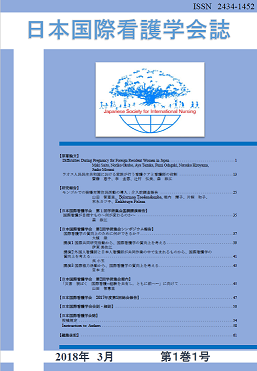Purpose, The purpose of the study is to discover difficulties and related factors that affect non-Japanese women during their pregnancies, and to offer suggestions for the provision of appropriate midwifery practice and education for non-Japanese in Japan.
Method, Non-Japanese participants were recruited at an English language childbirth class. Semi-structured interviews were conducted during participants’ pregnancies and/or after childbirth. Content
analysis based on both inductive, with categories based on the Sunrise model, and deductive approaches was performed. Data was collected from April to October 2012.
Results, Eleven women participated in this study. They experienced difficulties because of differences between their own culture and Japanese culture. Difficulties described by participants varied from troubles
and worries at medical settings to struggles and annoyances in their daily life. “Peer networks” served as a mediating factor aimed at amelioration of cultural gaps. On the other hand, “embarrassment”, of both
sides, created communication barrier.
Discussion, Midwives had better to overcome own embarrassment. However, as it can be challenging to change natural inclinations, health providers should effectively apply available resources, for instance
medical interpreters. Additionally, midwives should help to make links with peers for women who do not belong to peer network. It may also be effective to collaborate with other health providers, such as public
health nurses in communities.
View full abstract
